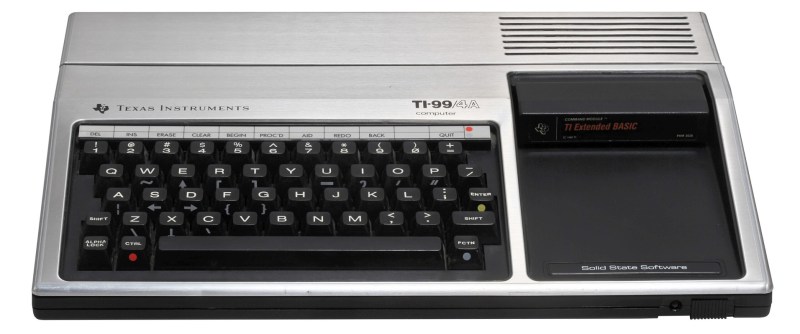Although now mostly known as a company who cornered the market on graphing calculators while only updating them once a decade or so, there was a time when Texas Instruments was a major force in the computing world. In the late 70s and early 80s they released a line of computers called the TI-99 to compete (unsuccessfully) with various offerings from Commodore, and these machines were fairly robust for the time. They did have limited memory but offered a 16-bit CPU and plenty of peripherals, and now there’s even a UNIX-like OS that they can run.
This version of UNIX is called UNIX99 and is the brainchild of AtariAge forum member [mrvan] who originally wasn’t looking to develop a full operating system for this computer but rather a set of standard C libraries to help with other projects. Apparently the step from that to a UNIX-flavored OS wasn’t too big so this project was born. While the operating system doesn’t have a UNIX certification, it has most of the tools any of us would recognize on similar machines. The OS has support for most of the TI-99 hardware, file management, a basic user account system, and a command shell through which scripts can be written and executed.
That being said, the limitations of the hardware do come through in the operating system. There’s no multitasking, for example, and the small amount of memory is a major hurdle as well. But that’s what makes this project all the more impressive, and [mrvan] isn’t stopping here. He’s working on a few other improvements to this platform, and we look forward to seeing future releases. UNIX itself is extremely influential in the computing world, and has been used a the model for other homebrew UNIX-like operating systems on similar platforms of this era such as the Z80.
Thanks to [Stephen] for the tip!
















Let’s be fair – by the mid 1990’s these things were full-featured enough that there isn’t really a whole lot that you can update to justify a constant stream of new models.
I’m using an HP48 that I bought in 1994! Actually, it sits in a drawer and now I emulate it on my phone;)
Once the first iPhone hit – and everyone changed to the fullscreen brick format – that was going to be the end of calculators as a big seller.
Let’s be fair? They also didn’t change the price! They were about $100 and required for undergrad math classes in the late 80s, and when I returned to school around 2010, they were still $100, still a requirement, even for Algebra. At that point any decent smartphone could emulate scientific calculators. They were definitely scamming students at this point, prices should have been reflective of Moore’s Law. I’m pretty sure there were cost-cutting changes made in manufacture of TI-84 and similar, so it was an ugly business.
this is the most Hackaday article ever
There were real TMS9900 based machines that ran V6 Unix without full protection, and of course the 9900 being a single chip cut down of a real minicomputer CPU has most of the bits you need except for supervisor mode and MMU to do a full protected mode.
The Geneve definitely could run a full Unix clone, and I’ve got Fuzix sort of running on a TMS9995 board but I need to sort out a usable compiler to finish the job.
No reason you couldn’t run full multi-tasking on a TI99/4A given a suitable banked memory card.
Wouldn’t have called it Unix99 though. I sense an incoming trademark cease & desist because the Unix people still police their trademarks 8)
Given the limited hardware ability, perhaps “Eunuchs99”? :-)
bonus points for historic callback
🤣
Well, to be fair they do make a lot of really good chips. They just aren’t particularly consumer facing these days. Just like Toyota once said that sports cars really aren’t their strong suit, direct to consumer isn’t really TI’s.
555 game strong
It might be the best that had happened to the TI99 so far.
The computer had a fine mechanical keyboard, good looks and an advanced CPU.
So far so good. The architecture wasn’t that great though, the TMS9918 VDP was poor. Like a ZX Spectrum.
So it’s great if there’s an OS that shields, protects the user. An eases porting software.
That or Contiki OS. It was created for embedded stuffs to start with.
Reminds me of PC/IX: System III Unix on an IBM PC-XT, one of four operating systems available for that computer when it launched.
I hope Usagi sees this. He’s doing a TMS990 SBC, last I checked. Hopefully getting rid of the VDP bottleneck.